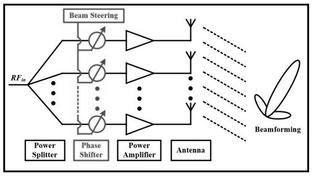TWS Radar: Advantages and Disadvantages
Advertisement
This page explores the advantages and disadvantages of Tracking While Scan (TWS) radar. We’ll cover the benefits and drawbacks, as well as a basic introduction to how TWS radar works.
What is TWS Radar?
Introduction: TWS stands for Tracking While Scan. As the name suggests, it’s a radar system designed for both searching for and tracking targets simultaneously.
The scanning process typically uses a single narrow beam or a fan beam, depending on the desired scan sector. While TWS can handle multiple targets, Single Target Tracker (STT) radar is often preferred when higher accuracy is required for a specific target.
TWS with a limited scan sector finds application in Precision Approach Radar (PAR) and Ground Controlled Approach (GCA) radars. These radars are crucial for guiding aircraft during landing procedures.
In modern systems, Automatic Detection and Track (ADT) systems can often replace TWS radar.
Applications of TWS Radar:
- Used in PAR and GCA radars for guiding aircraft landings.
- Used for weapon control in surface-to-air missile systems.
Benefits or Advantages of TWS Radar
Here are the key advantages of TWS radar:
- Tracks Multiple Targets Simultaneously: The primary benefit is the ability to track several targets at the same time, providing a broader picture of the surrounding airspace.
- Used in Air Defense Systems: Its multi-tracking capability makes it a valuable component in air defense systems, allowing for early detection and response to potential threats.
- Shares Energy Over a Region: TWS radar distributes its energy across a larger area, making it suitable for scanning and tracking within a defined region.
- Useful for Weapon Control: In surface-to-air missile systems, TWS helps control weapons by providing tracking data for multiple potential targets.
Drawbacks or Disadvantages of TWS Radar
Despite its advantages, TWS radar also has some limitations:
- Lower Accuracy Compared to STT: Its accuracy is generally lower than that of Single Target Tracker (STT) radar, which focuses all its resources on a single target.
- Vulnerable to Electronic Countermeasures: TWS radar using fan beams can be susceptible to electronic countermeasures (ECM), which can disrupt or jam the radar signal.
Advertisement
 RF
RF




